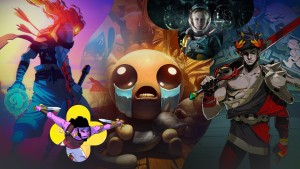Please support Game Informer. Print magazine subscriptions are less than $2 per issue
XCOM’s Classic Ironman Mode Is An Even Match For Its Creator
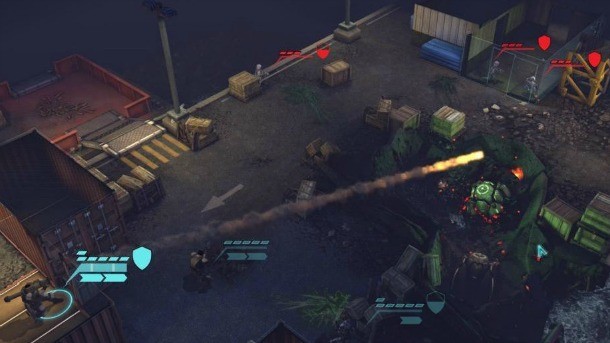
Jake Solomon, lead designer of Firaxis’ nearly released alien invasion strategy game XCOM: Enemy Unknown, discusses the game’s difficulty modes, robot tanks, and why losing is fun.
When you’re done here, why not check out the full review of the game or watch Reiner and I mock Jason’s tactics in our XCOM Test Chamber episode?
 XCOM is definitely a game that’s at its best when you’re back is against the wall and you’re really challenged.
XCOM is definitely a game that’s at its best when you’re back is against the wall and you’re really challenged.
Absolutely, even if you just play Ironman or if you go in thinking I’m not going to reload or something like that definitely adds quite a bit to it.
What role were SHIVs [Super Heavy Infantry Vehicles; the robotic tanks available later in the game] designed to play?
You have to want to build SHIVs. Most of my play-throughs I’d say that I don’t play with SHIVs. The times that I do I love using them, but it’s funny because SHIVs are something that you have to actually commit to.
I wanted normal to be a game where people didn’t have to worry about the strategy layer. I felt like if you wanted to mess around there, the strategy area was like a fun area but you got a lot of things for free, like the Officer Training School was already built and you get way more scientists and engineers. In normal just by building satellites you’ll get all the scientists and engineers you’ll ever want, then on Classic that’s cut, basically, more than in half.
On Classic to be successful you have to worry about the strategy layer. It’s much harder if you’re playing Ironman, or especially Classic Ironman, then your SHIVs become almost essential.... When you’re playing on a harder difficulty level losing somebody who is an experienced soldier is actually – the blow is that you’re going to have to move forward with rookies. SHIVs actually protect you; they can slot in when you lose somebody valuable and you can be like, “Alright we’ve got two SHIVs that we can put in their place and build the rookies up and protect the other troops.” When I play Classic Ironman I generally try to force myself to build a couple SHIVs.
I can’t play normal, I have to play Classic. It’s just more fun to get back from combat and have all these new worries, like if I don’t get an Officer Training School built soon but at the same time if I don’t build a lab I’m not going to have any lasers. We always talk about the turning point being in June, when Mutons appear and you’re just on that tech bubble of having enough lasers and Carapace Armor for everybody but you probably don’t have it yet, and everybody is really unhappy and you don’t have enough satellites. That’s always the point where I can tell, am I going to win this game or am I going to lose this game?
Do you see a fair amount of losses on Classic in your internal playthroughs?
Yeah, Casey our lead programmer just lost on Classic. If I’m playing Classic Iron Man I definitely lose easily as much as I win just because if I’m not paying attention and I lose a good soldier or two early then I know I’m going to have a really hard time. Obviously that makes us happy making sure people can lose on Classic. It’s interesting, Ironman kind of bridges the gap because Impossible is truly impossible, it’s like a roguelike where you’re going to die and lose on Impossible. Ironman is sort of like once I’ve played Classic enough and I can generally win on Classic, then Ironman kind of bridges the gap where it’s back to being incredibly intense, mistakes really count.
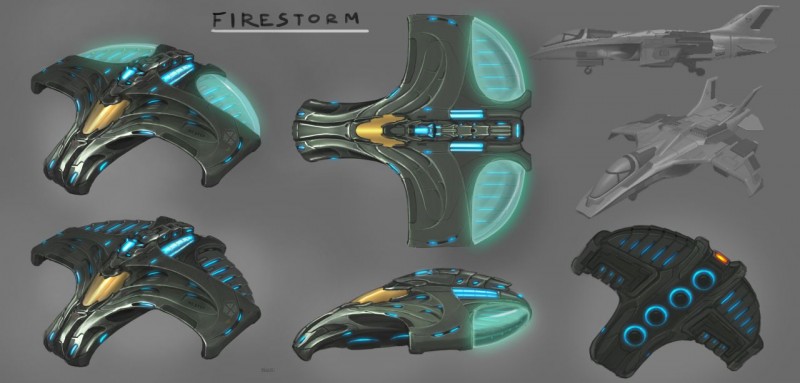
What was the idea with Impossible? Is it just to give that sort of, “Well, if you really want to,” or what was the design goal of it?
It was the sort of thing where Classic was meant to be a very challenging game, and when I said we really need to have an Ironman mode, I never really put it together. I always viewed that as separate from difficulty but it didn’t actually work out that way.
Ironman ended up being the bridge between the difficulty levels, so normal is easy for a strategy guy; pretty straightforward once you learn the mechanics. Classic is challenging even if you know how to play, but normal Ironman is in between those two and I didn’t expect that. Impossible came out of this idea of, “Well I really like roguelikes, I wonder if I could make a difficulty mode where you’re just constantly just inches away from losing.”
If I’m being entirely honest, Impossible was probably the one design thing I did where I feel like it didn’t work out exactly the way I expected it to. There are times where on Impossible it almost feels like a slog, at some point if you make it too difficult it just becomes this [chore]. The things you’re talking about work really well on Classic where it’s like, “Oh I don’t feel like I got screwed by the random numbers,” but on Impossible things are so hard that it starts to become almost frustrating. You kind of have to play Impossible with the mindset of, “Well I’m going to lose let’s just see how bad it’s going to be.” It kind of came out of a place of difficulty levels are so hard with strategy games just because by the time the game comes together you spend all your time balancing.
First on normal, and then you balance [Classic mode] and then the Impossible one -- it’s really hard in the last couple months that I have the game in my hands for me to take a week out of my time and say, “I’m going to play Impossible mode now,” and so I played Impossible pretty late and was like, “Oh boy, this is really hard.” It was hard to know how far back to bring it. Impossible was a really interesting design experience because what I wanted was something that felt like a roguelike but it’s just kind of a beast because Iron Man fills that role, and so Classic Ironman is what I consider to be the best form of the game. Impossible has become this sort of, I don’t know. It’s optional. It’s like those marathons in Gran Turismo or something. It’s almost like an endurance run.
Read on for more about XCOM's difficulty.
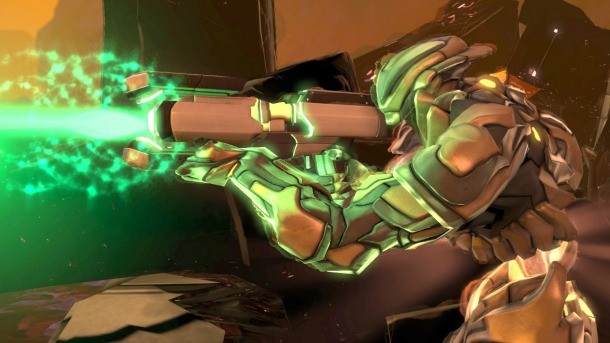
How many Impossible playthroughs actually got completed during development?
Well in terms of getting beaten, we had two. There was one guy in QA because we were like, you have to prove that this is possible because we give out an achievement for beating the game on Impossible and we were like, look we have to prove this otherwise Microsoft and Sony are going to be like, “Hey, a------, is this even possible?” So we actually had a QA guy go through and beat it. Then I had this great guy who works for 2K and his name is Doug and he’s like a pro-level Street Fighter. He’s a straight-up gamer, he not only beat it on Impossible but he beat the alien base on Impossible Ironman, which if somebody had told me that I would’ve said that that’s not even possible. He actually ended up losing the game, so he beat it on Impossible then he tried to beat Iron Man Impossible and he actually got past the alien base but then after that he ran into a map where he lost everybody and he was like, “Well that’s it, I’ve lost.” On Impossible if you don’t have veterans you’re just going to get slaughtered. So Impossible we know it can be done because we have two victories but I make no claim to your sanity by the time you beat the game on that mode.
How much do you actually change the math in the game for difficulty modes? I noticed certainly panic is a lot more of a factor, but what else do you do in terms of the underlying math?
It’s interesting because I didn’t want it to be just they have more hit points now. I did adjust the math but I adjusted it very [intentionally]. There are a lot of things I changed about Classic from normal that are subtle things like on the strategy layer in terms of what cities the aliens would target. On normal a lot of times the aliens would take it easy, in terms of like don’t target the city that’s suffering the most, that would just be a Dick move by the aliens.
On Classic it’s like all gloves are off, the aliens are trying to play the best game that they can. It’s the same in tactics. If you play a game on normal, the aliens will say, “Oh god, we’re already engaging him with four or five aliens, everybody else that’s out there, everybody just sort of hang back and be cool.” On Classic mode it doesn’t really matter how many aliens are in the fight. In normal you can actually see some aliens running off if there are too many, but in Classic if you’ve made the mistake of somehow encountering six or eight aliens at once the aliens will all simply join into the fight and work together. So yeah, panic changes, the way they use psionics, the psionic aliens can work together with the Mind Fray ability but on normal difficulty you’ll only ever encounter one psionic alien at a time. On Classic you’ll actually encounter two and that’s not to sort of add another enemy, it’s more because the AI goes, “Oh, I have two guys here, well I should Mind Fray first and then I should use [Mind Control].” The AI is just a little more, you know I don’t want to oversell and be like oh they use different tactics. I mean they do actually but after the sort of tactical upgrades then there are some number upgrades for really key aliens, like Mutons, and again this is very specific.
I didn’t just go, everybody gets this much [critical hit chance] or everybody gets this many hit points, instead it’s more like the chryssalids get two more hit points, which doesn’t sound like a lot but it completely changes the way they play, and Mutons get two more hit points, which again makes them really difficult on Classic. It’s really specific math to that alien. One of the big things is that thin men get an extra hit point so they can’t be killed with grenades on a Classic game. The floaters are the same. It’s not numbers just for the sake of increasing the numbers, it’s numbers to change the tactics of the player, so a grenade is not going to kill a floater anymore so now you’re like, “Well, s---.” Now you’ve got to think of a new way to kill those guys; you actually have to kill them with something other than [area-of-effect] weapons.
At Impossible I think there’s an across the board increase in terms of their crit, but typically when going from normal to Classic the numbers are adjusted to specifically change the way you interact with that particular alien.
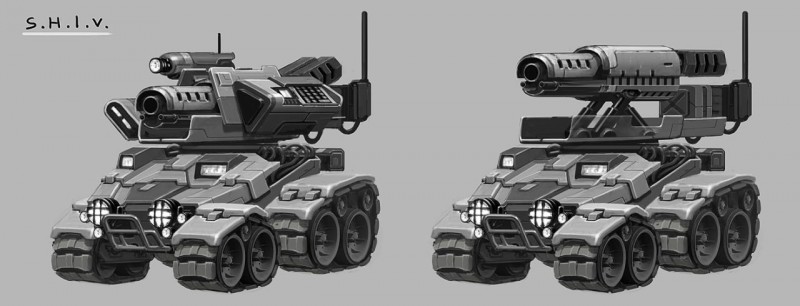
What was the design process like? Was it like, make Classic because that’s a game that you want to play and then dial it back for normal to make sure that it’s not going to scare anybody off, or did it work differently?
What I did was I started at normal, and then we wanted to make the game pretty hard and then we found out that normal isn’t actually as hard as we thought it was going to be. Normal ended up being, for whatever reason, ended up being like, “Oh people actually picked up the game a lot easier than I would have thought.”
The strategy layer was never like that. The normal difficulty strategy layer was always closer to Classic, and what happened was that people could get through normal combat but people were getting tripped up because the strategy layer was requiring them to do all this thinking about funding, and that was where strategy players had no problem, and non-strategy players, people who were just gamers, they got completely blown away on the strategy layer. I realized that I wanted normal difficulty to be a difficulty that everyone can play and beat. So I walked back the strategy layer on normal, and I kept the strategy layer on Classic really difficult, cutting down the number of specialists, making the AI behavior a lot more, I don’t want to say intelligent, but they just play the game a lot more. Whereas normal it’s a lot more random behavior. Normal was like the baseline for combat and then the strategy was walked back on normal. On Classic, combat actually was made harder than what our baseline was, and then the strategy layer stayed the same there.
It’s interesting because we don’t have that many Impossible playthroughs and we actually don’t have many easy playthroughs, although we do in our QA department obviously for testing, they love playing on easy because they can just wing through that thing.
Easy is pretty easy. You’re still going to lose guys especially if you’re not familiar with strategy games or tactics games. I think the majority of the plays are on normal and Classic and then what typically happens is exactly what you said. A lot of guys on the Civ team played the game and they played it on normal, beat it, and then immediately go start a game on Classic because for strategy people it’s like that’s not enough. They had a good time, they loved it, but they didn’t feel like their back was against the wall all the time.
[Special thanks to GI intern Jordan LaPorte for his help on this piece]






